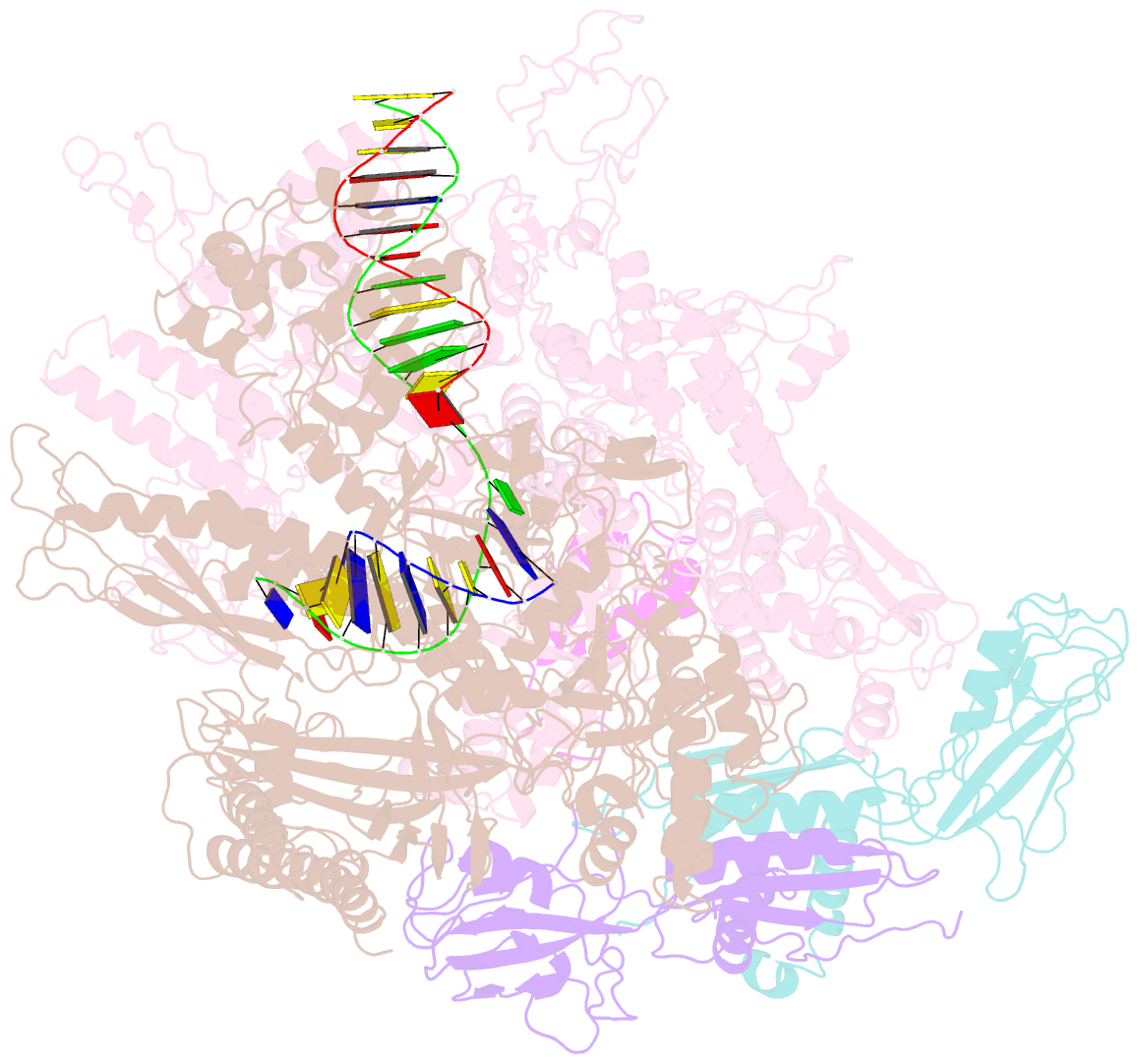Summary information and primary citation
- PDB-id
- 6wmp; SNAP-derived features in text and JSON formats;
DNAproDB
- Class
- transcription
- Method
- cryo-EM (2.98 Å)
- Summary
- F. tularensis rnaps70-igla DNA complex
- Reference
- Travis BA, Ramsey KM, Prezioso SM, Tallo T, Wandzilak JM, Hsu A, Borgnia M, Bartesaghi A, Dove SL, Brennan RG, Schumacher MA (2021): "Structural Basis for Virulence Activation of Francisella tularensis." Mol.Cell, 81, 139. doi: 10.1016/j.molcel.2020.10.035.
- Abstract
- The bacterium Francisella tularensis (Ft) is one of the most infectious agents known. Ft virulence is controlled by a unique combination of transcription regulators: the MglA-SspA heterodimer, PigR, and the stress signal, ppGpp. MglA-SspA assembles with the σ70-associated RNAP holoenzyme (RNAPσ70), forming a virulence-specialized polymerase. These factors activate Francisella pathogenicity island (FPI) gene expression, which is required for virulence, but the mechanism is unknown. Here we report FtRNAPσ70-promoter-DNA, FtRNAPσ70-(MglA-SspA)-promoter DNA, and FtRNAPσ70-(MglA-SspA)-ppGpp-PigR-promoter DNA cryo-EM structures. Structural and genetic analyses show MglA-SspA facilitates σ70 binding to DNA to regulate virulence and virulence-enhancing genes. Our Escherichia coli RNAPσ70-homodimeric EcSspA structure suggests this is a general SspA-transcription regulation mechanism. Strikingly, our FtRNAPσ70-(MglA-SspA)-ppGpp-PigR-DNA structure reveals ppGpp binding to MglA-SspA tethers PigR to promoters. PigR in turn recruits FtRNAP αCTDs to DNA UP elements. Thus, these studies unveil a unique mechanism for Ft pathogenesis involving a virulence-specialized RNAP that employs two (MglA-SspA)-based strategies to activate virulence genes.





